So, you’re looking for an adventure and have decided on America’s Great Loop. This trip offers endless beauty, incredible camaraderie, and wonderful times. A lot has been written on the topic, and there are countless ways to go about preparing yourself. At PropTalk Magazine we suggest you think of it in three distinct dimensions: what is physically required, the intellectual aspects you must get your head around, and the emotional issues behind leaving your current life for a yearlong trip. This is the first of a three-part series on these topics and addresses physically preparing for your voyage.
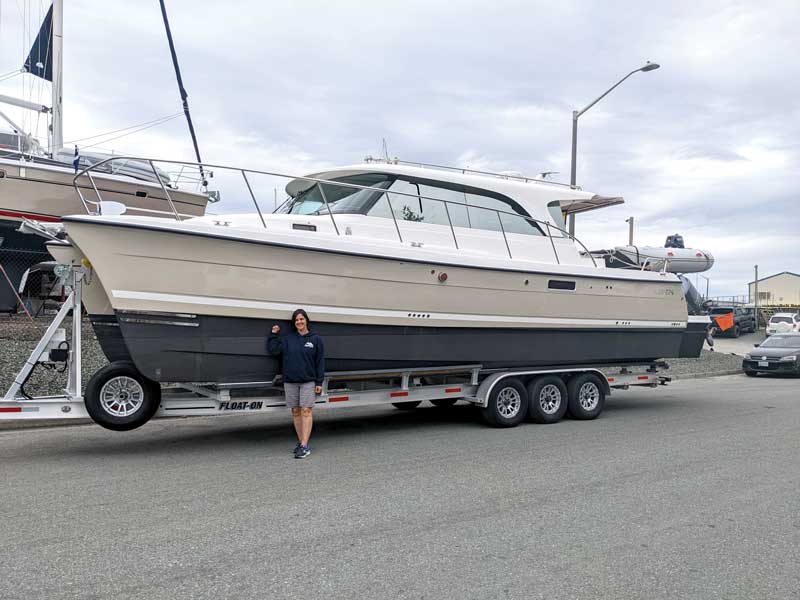
There are many physical considerations one thinks about when preparing for a trip of this magnitude. Some examples are: How do you go about determining what boat is right for you? What should you plan to bring on the trip? What type of lines and fenders and anything else that manifests itself in physical form do you need to consider? As with everything in life, price is important but not everything. For this discussion, we view it as a gating factor in relation to the other important criteria you will consider.
The Boat
The first big topic is the boat itself. Boats come in all shapes and sizes with a multitude of capabilities as well as limitations. Finding the right boat for you sounds easy enough but can quickly get confusing as you wade through the myriads of options. Fear not; the solution is actually pretty straightforward. Before you ever start clicking around the web looking at boats, spend a few minutes with your partner and think through what you want to optimize for. Every boat is a tradeoff and identifying the key components up front will quickly narrow the field allowing you to focus on boats that will be right for you. Let’s look at a couple of examples:
For my admiral and I, our home waters are the southern Chesapeake. We wanted a boat that would not only serve us well on the Loop but would endure past that time and allow us easy cruising in the notoriously choppy waters of the Bay. Therefore, our optimization criteria were: 1) comfort at speed (roughly 20 mph), 2) fuel efficiency at speed, and 3) stability in rough weather. For us a powered catamaran was ideal (we chose a 37.5-foot, 22-inch-draft Aspen C-108).
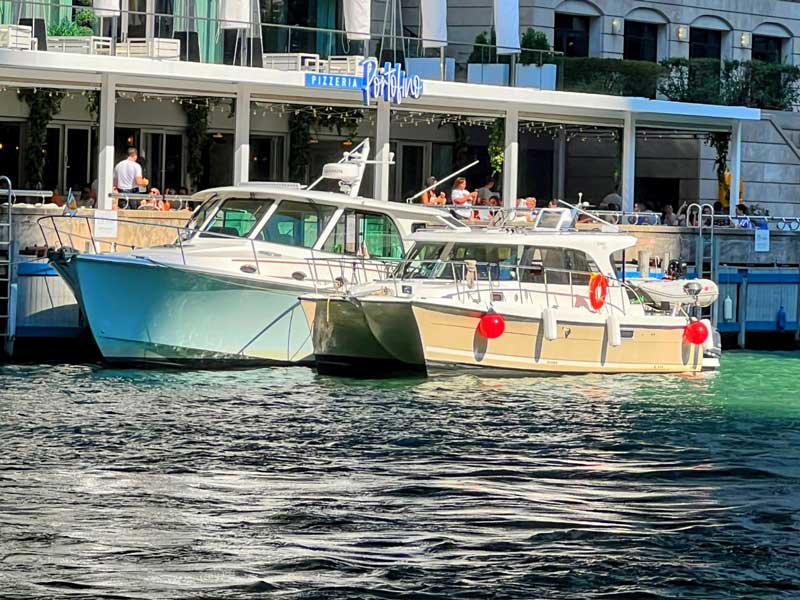
Another boat we traveled with was a Mainship 390 that the owners had optimized differently. They put safety first and foremost and defined that as a wide gunwale with high security bars. Their second consideration was wider space in the cabin, head, and galley area. Their third consideration was power. They wanted only one engine, ensuring ample space in the engine room to work. The Mainship was a perfect match.
Yet another boat we traveled with was a Meridian 459. Their optimization was completely different. First and foremost, they wanted a flybridge due to the captain’s childhood passion with his grandfather many years past. The second criterion fell into the category of safety but was defined as an aft cabin allowing quick egress from the boat should a nighttime situation arise. Their third criterion was dual diesel engines. They wanted the stability and economy of diesel fuel and the reliability of two engines should they have an issue with one.
These three boats are extraordinarily different. When you decide on your own optimization criteria, you will likely come to a very different conclusion than any of these. What is important to know is that each of these boats was right for the couple that was operating it. None was eager to change with the other.
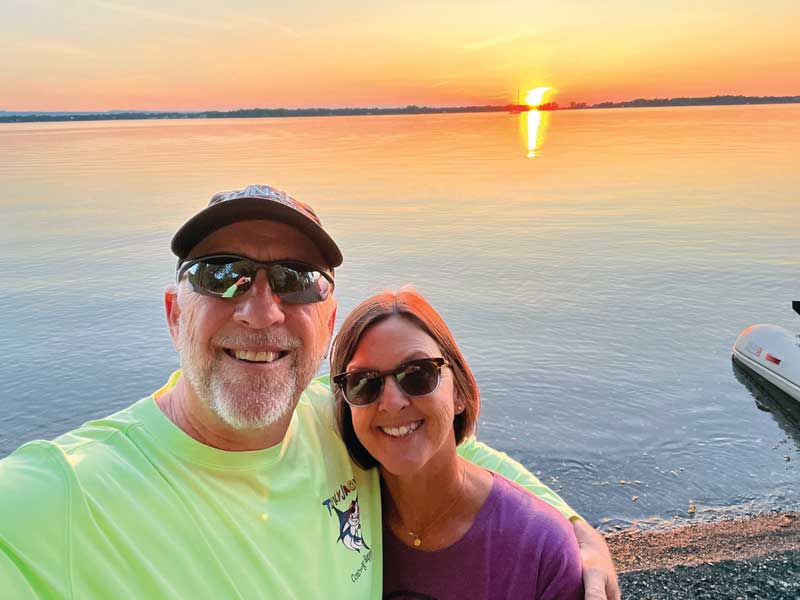
Clothing, Supplies, and More
Your physical considerations don’t stop with the boat. What is the right anchor for you? There are many different options, and each serves well in certain conditions and not as well in others. What are the electronics you’re going to put on your boat? Is AIS a requirement? Do you need one chartplotter or two? Is radar in the ‘must have’ or ‘nice to have’ category? As a general rule, everyone agrees that Nebo is a fundamental requirement with the only question being do you use the Nebo link or just the free app?
Time also needs to be invested in understanding the parts and maintenance your boat will require. What do you want to bring with you versus pick up along the way? It is common to bring the right filters, belts, hoses, maybe spare pumps, and certainly a tool set well matched to your engine. Falling on almost everyone’s ‘must-have’ list for non-outboard boats is a spare pair of propellers. Universally it is thought that bringing hard to find items that wear down is imperative whereas easy to find items should be picked up along the way. For example, don’t feel required to bring gallons of oil because you can get oil almost everywhere. You might, however, have trouble finding your filters and belts.
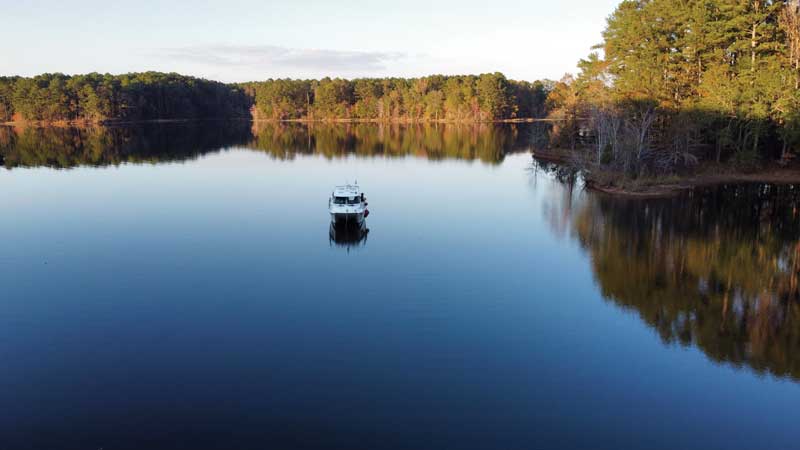
How about clothing? As a general rule, most people overpack for the trip. In reality you need a fraction of the clothing you think you might use. I found that a few pairs of shorts, lots of underwear, and multiple T-shirts handled 80-plus percent of my needs. If there was one area that I packed light on it was warm clothes. I really only needed one (or two at most) long pants but do throw in an extra sweatshirt and maybe even a light puffy jacket. Canada, even in the summer, can get chilly.
Now consider the galley. Similar to clothing, you need a lot less than you think. A nesting set of Magna pots will serve most people’s needs. We only brought one paring knife on the boat and found it to be more than adequate. We had four plates and on that rare occasion when you had more than four people for dinner, the other boaters eagerly brought forth supplies. It actually adds to the fun. It is recommended you bring things that are hard to find like the spices you like to use and perhaps specific baking items if you are a baker. Many boaters brought multipurpose appliances like an air fryer, toaster oven, or electric skillet.
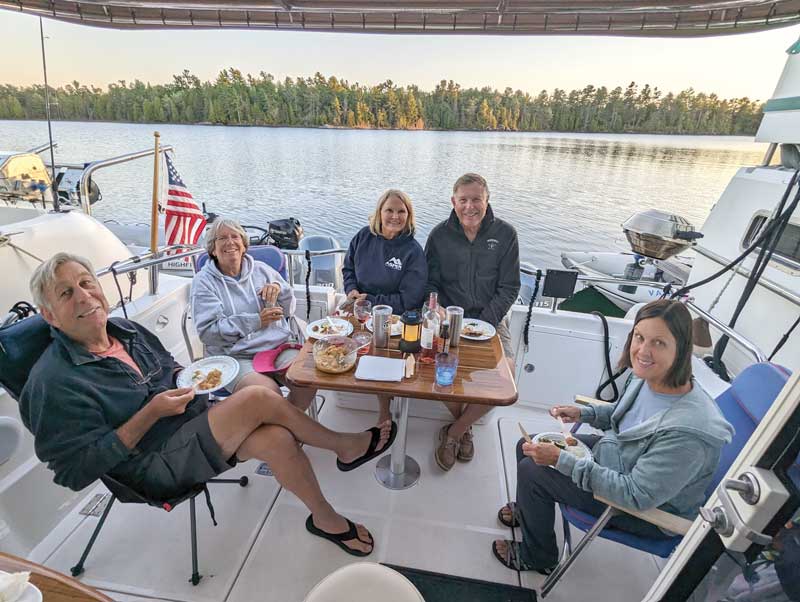
And don’t forget about your dinghy. There is much debate about if one is even needed on the trip. I am in the camp where it is required. We found great utility in having a dinghy to explore the islands in both the Great Lakes and the Bahamas. As with the primary vessel, there are countless options for a dinghy, and they all come with pluses and minuses. As a general statement, the quicker you can deploy the dinghy the more you will use it. Lighter dinghies tend to deploy more quickly and thus get far more use. Focus hard on the stability of the dinghy in your selection as well as the speed you wish to go. Our dinghy could deploy quickly but only had a six-horsepower motor. That worked fine for us, but there were times we wished we could go faster, particularly when it was loaded with me, my admiral, and our 70-pound dog. Just as with the main boat, focus on what you want to optimize and then go for that.
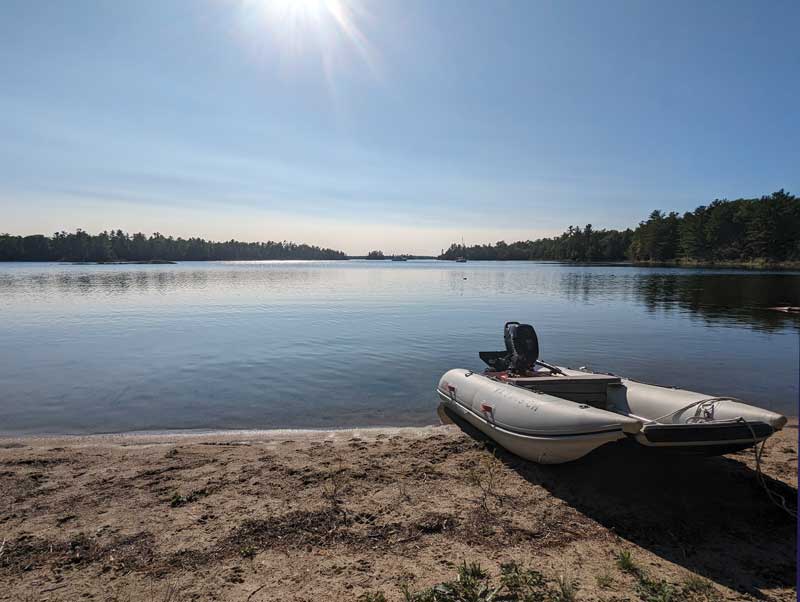
The physical considerations for items necessary to complete the Great Loop can extend to your ropes and fenders and on and on. But don’t stress over this; just start organizing and understanding how you’re going to use the items you’re selecting and make sure they’re a good fit for your needs. Most things on a boat are a tradeoff. An honest deep dive into your criteria before entering the selection process will guide you to not just the right boat, but how to outfit it appropriately.
About the Authors: Aubrey and Terri Smoot and their dog, Yudee, completed the Great Loop in the 2023/2024 fleet aboard their Aspen C-108 power catamaran Shorebilly Too. They hail from Kilmarnock, VA, and their story was featured in the November 2024 PropTalk (proptalk.com/great-loop-real-retirement-adventure).
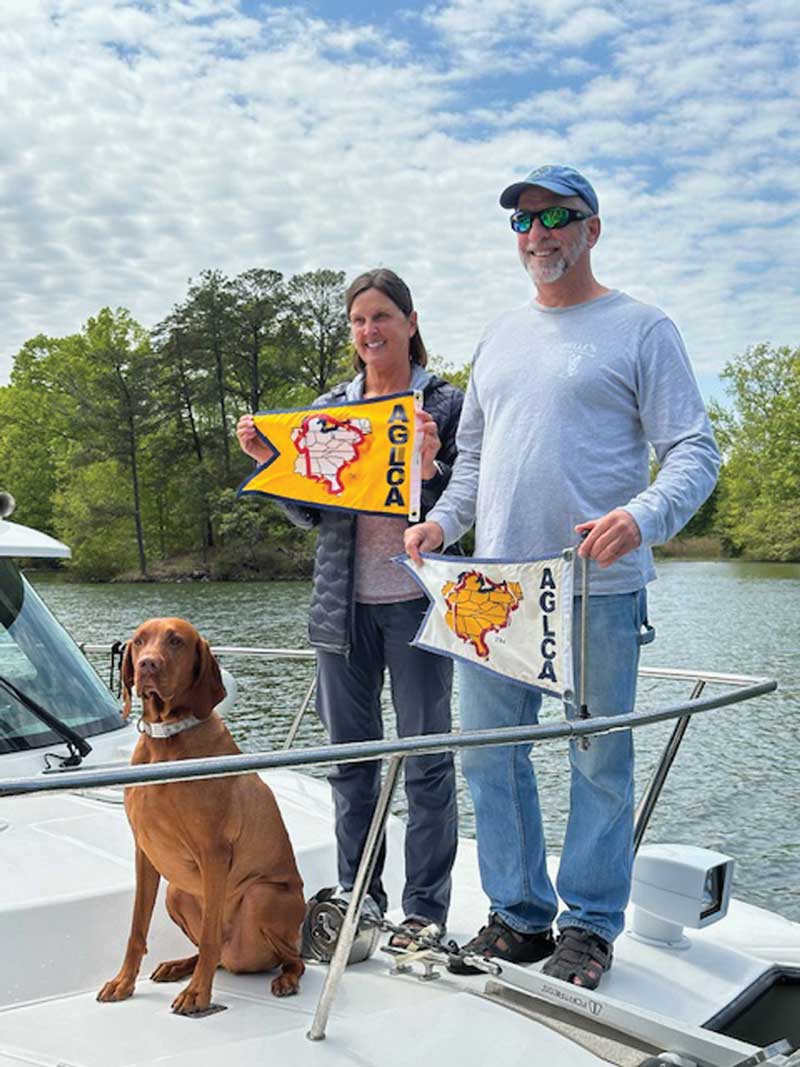
Stay tuned for part two in our Great Loop Cruising Series in the June PropTalk!
Editor's Note: We want to thank Cruisers University for sponsoring this three-part series. The Fall 2025 Semester of Cruisers University will be held Monday, October 6 through Friday, October 10 at The Historic Inns of Annapolis. Registration will open in May. More than 75 classes are available for sailors and powerboaters alike who have an interest in learning the fundamentals of blue water cruising. Led by experienced cruisers and sailing industry professionals, the curriculum includes classes such as marine weather forecasting, traditional navigation techniques, electronic tablet navigation, diesel maintenance, heavy weather sailing, and electrical systems. To learn more, visit cruisersuniversity.com, and/or the Annapolis Boat Shows website.